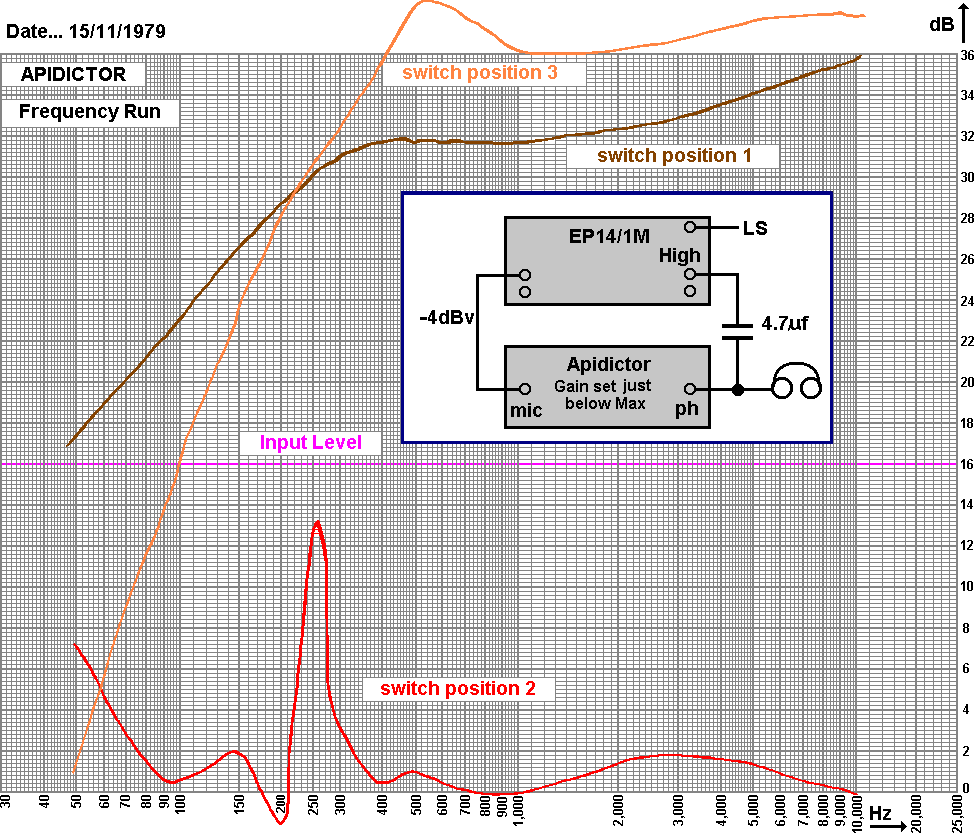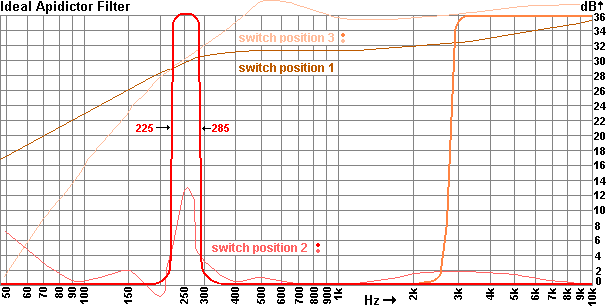| "E" Home |
|---|
| Prev. Menu |
|---|
Apidictor Inductors
Inductor calculations
|
ELECTRONICS "A-Z" INDEX |
|---|
| Back |
|---|

|
Apidictor Inductors Inductor calculations |
Apidictor Filter Characteristics |
|---|
position 1 straight through, position 2 narrow band pass and position 3 high pass.In reading Rex's "Listen to the Bees" there is a reference to the high pass filter for hiss detection being for frequencies above 3,000 Hz, but the curve shows a starting point at around 500 Hz, maybe this was just the result of simplifying the filter from the original breadboard model, but we can improve on this considerably. (Unless the figure quoted should have been 300 Hz.)

|
|---|
| The shape of the original graphs has more to do with what could be achieved simply with the technology available, rather than the desired characteristic. Therefore I reproduce a simplification of the characteristic that may be more readily achieved by today's methods and is more appropriate to what is being listened for. The lines use the same colours as in the original and the original ones themselves are shown feint. |

|
|---|
Written... 13 December 2001, New Domain 15 April 2004, |